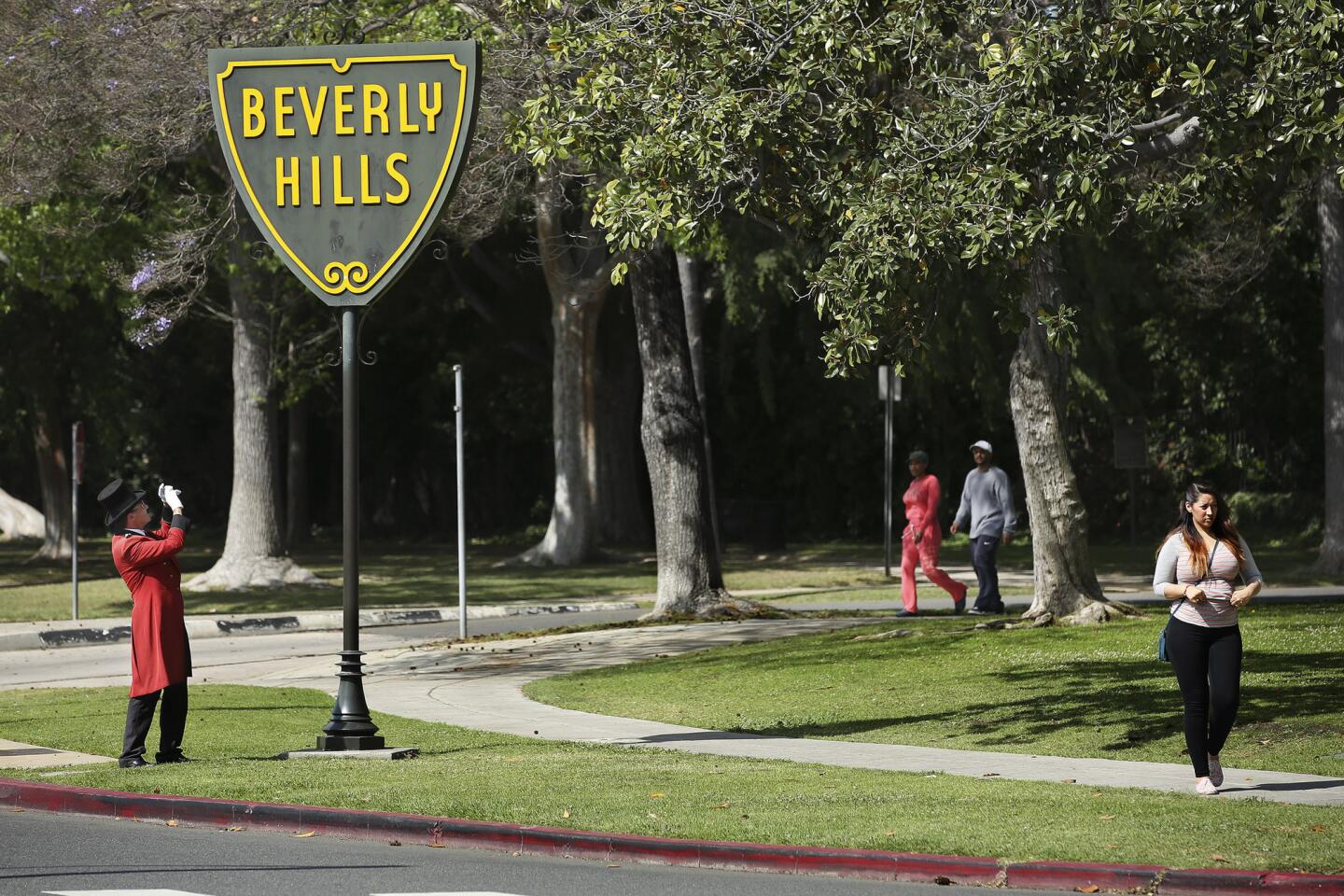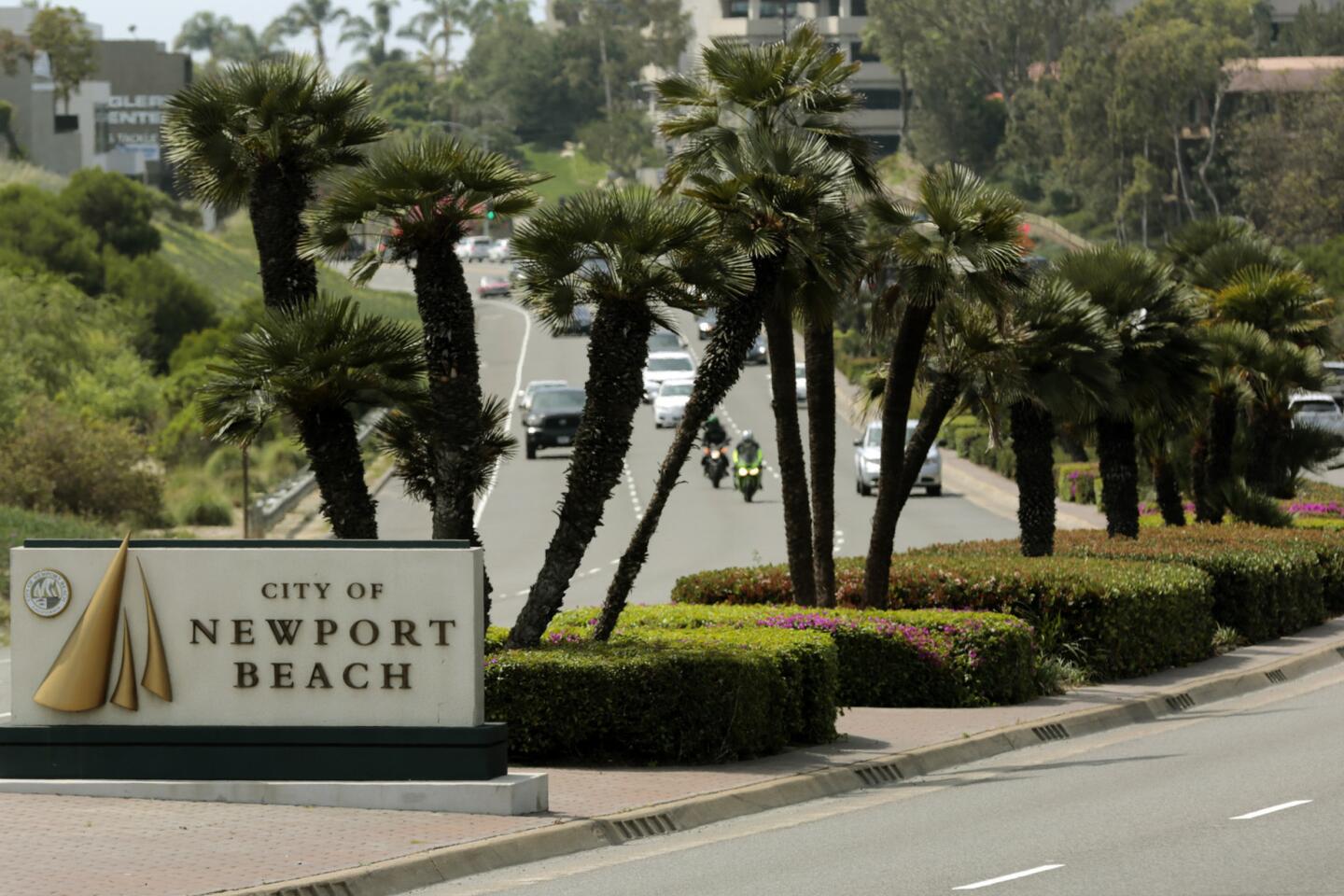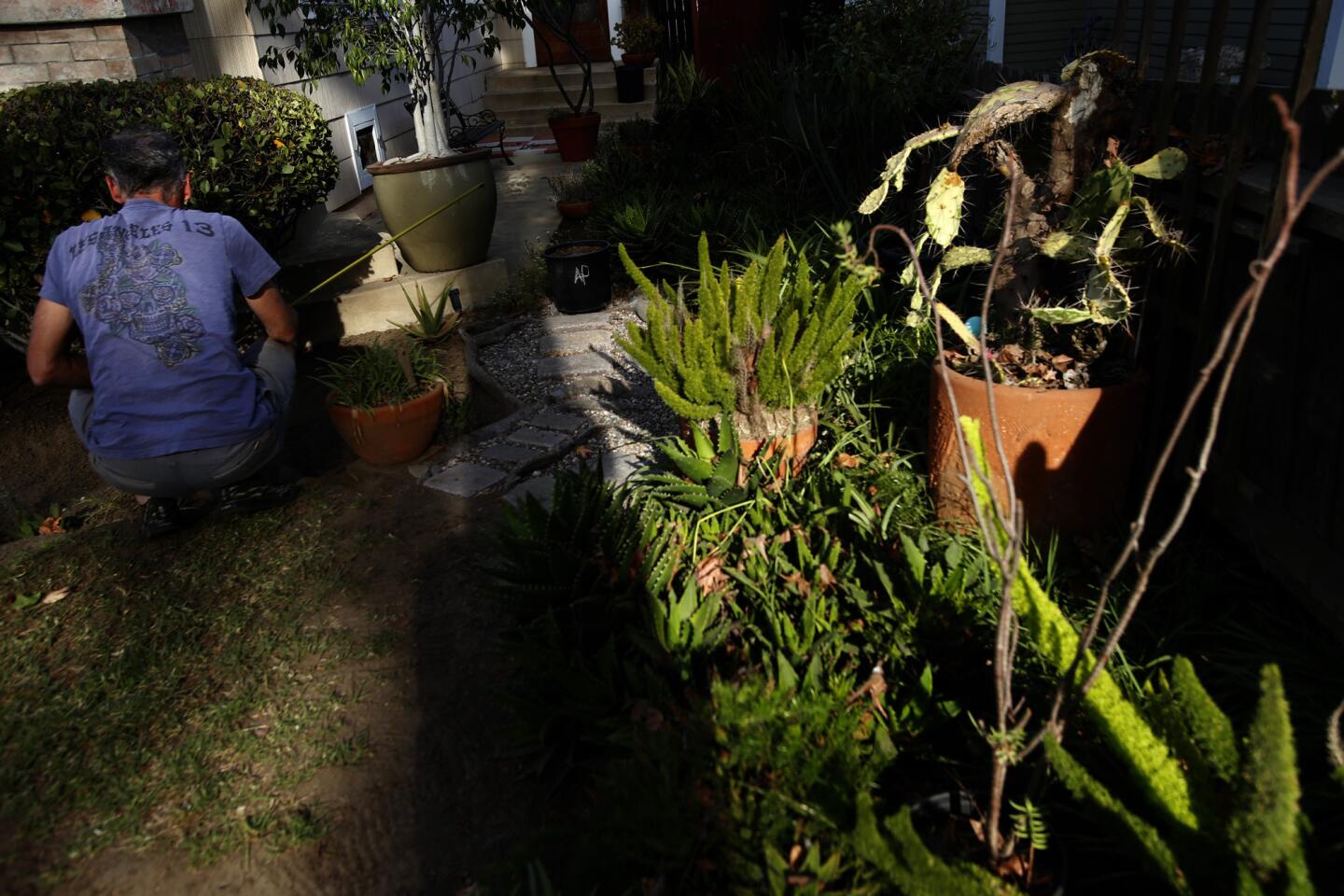Some communities may have to cut water use by 35%, regulators say
- Share via
Reporting from Sacramento — In an aggressive push to reduce water usage statewide, California regulators are proposing that the biggest urban water users cut consumption by as much as 35% over the next year.
The State Water Resources Control Board’s plan, unveiled Tuesday, would place the heaviest conservation burden on cities and towns with the highest rates of per-capita water consumption, which would include small rural communities as well as affluent enclaves like Newport Beach and Beverly Hills.
Cities that have the lowest per-capita water use — including East Los Angeles, Santa Cruz and Seal Beach — would be required to cut just 10%.
Agencies that don’t comply with the rules could face fines of up to $10,000 a day.
“The gentle nudge is no longer sufficient,” said Max Gomberg, the water board’s senior scientist. “We’re taking the enforcement piece very seriously.”
The conservation targets were part of a new framework the state board unveiled to comply with Gov. Jerry Brown’s historic order requiring a 25% cut in water use in cities and towns statewide. The proposal assigns targets to more than 400 local water agencies.
The five-member board, whose members are appointed by the governor and confirmed by the Senate, could adopt the plan in May. The board is seeking feedback on the plan, which could change before the vote.
Most communities would be required to cut water use by 20% to 25%, including Los Angeles, San Diego, Long Beach, Santa Ana, San Jose and Anaheim.
Officials said they measured residential per capita water use in September 2014 to set the benchmarks. But the state will measure whether each community hits its target by comparing overall water use over the next year with 2013 levels.
The targets were released the same day that the board announced dismal water conservation numbers for February. Californians reduced water use just 2.8% in February compared to the same month in 2013. It was the smallest decrease since officials began releasing monthly conservation numbers last summer.
Southern Californians actually used more water in February, while most other areas cut back.
“It’s a really disturbing number,” said State Water Board Chairwoman Felicia Marcus, who attributed February’s results to warmer weather and the improving economy.
Still, she expressed hope that Californians understood the severity of the situation.
“They want to do the right thing,” she said. “But they lead very busy lives. And it’s government’s job to make it easier for them to do those right things.”
Brown’s mandatory statewide water restrictions, the first in California’s history, come as the state endures a fourth year of drought. Slashed irrigation deliveries have forced growers to idle thousands of acres of cropland. Groundwater levels in some areas have plunged, causing the ground to sink. Some small communities have run out of water. And while reservoir levels are higher than last year, the mountain snowpack, which provides about a third of the state’s water supply in normal years, is at a record low.
Amid the growing water worries, the Metropolitan Water District of Southern California is expected to vote next week to ration water that it supplies to 26 Southland water districts and cities. Local agencies that need more water than the MWD allocates will be required to pay costly rates, a powerful incentive to require the cutbacks needed to meet Brown’s conservation goals.
Per-capita water usage varies significantly across California.
Residents in communities like La Cañada Flintridge, Malibu and Palos Verdes used more than 165 gallons of water per capita per day in February. By contrast, Santa Ana residents used just 60 gallons, and in communities in southeast Los Angeles County, residents used less than 45.
Communities in the 35% reduction group are diverse, including Bakersfield, Redding, South Pasadena, Hemet and Colton.
But some of the state’s wealthy communities have come under scrutiny for high water use. These areas tend to have fewer apartments and less dense housing. Homes tend to be larger and include sprawling, landscaped grounds.
Beverly Hills officials said they were working on a conservation plan, and Newport Beach officials said they were issuing fines to water wasters and were prepared to strengthen watering restrictions.
It remains unclear, though, just how these cities will attain the ambitious conservation mandates.
“Thirty-five percent is achievable, but it’s not going to be easy,” said Heather Engel, spokeswoman for the Coachella Valley Water District, which serves desert resort communities near Palm Springs.
Engel said that the district would need funding for conservation rebates and that more water restrictions were likely.
“Staff has been brainstorming a lot of ideas to see what’s feasible and what will be successful,” she said.
Another agency facing big cuts is the Santa Fe Irrigation District, which serves an affluent part of northern San Diego County.
“We knew that we were going to be asked to conserve more than 25%,” said Jessica Parks, an agency spokeswoman.”We are systematically pursuing every opportunity to help our customers drive down their water use, and we’ll keep driving it down until we get it to where we need it to be.”










